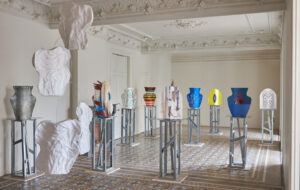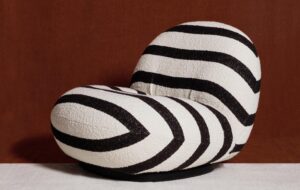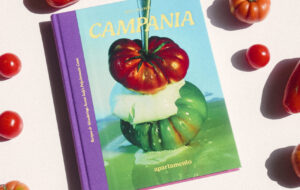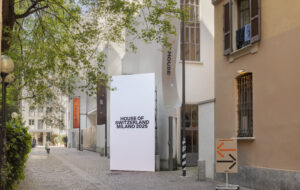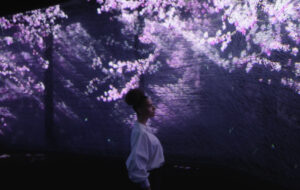For a limited-edition series of its Essential Cabin Threshold cases, RIMOWA has partnered with British textile artist Ptolemy Mann.
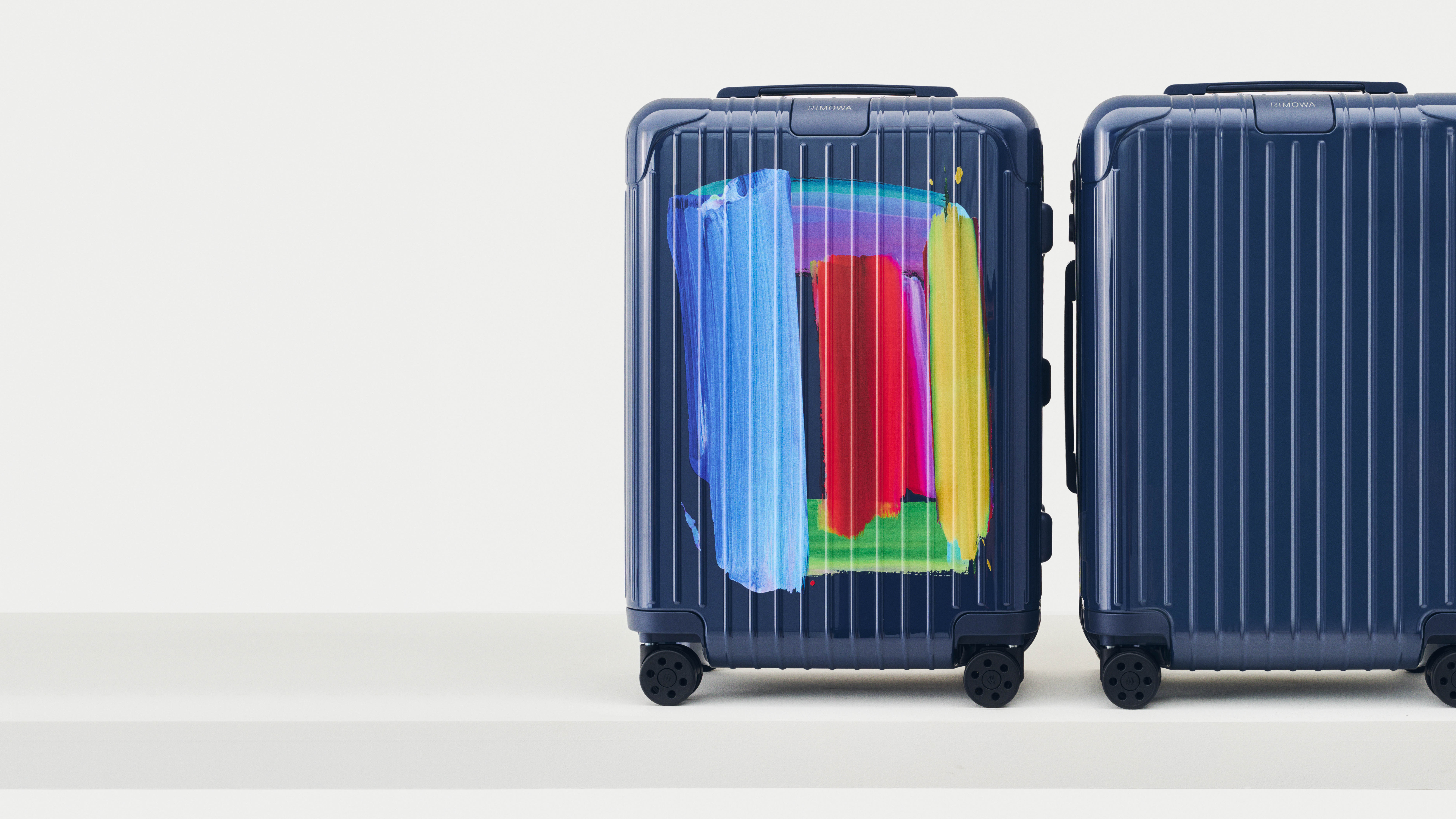 RIMOWA has partnered with British artist Ptolemy Mann for a limited-edition run of its Essential Cabin Cases. Photography: Victor Brun
RIMOWA has partnered with British artist Ptolemy Mann for a limited-edition run of its Essential Cabin Cases. Photography: Victor Brun
Words by Roddy Clarke
Last month RIMOWA unveiled its newest Essential range of suitcases, available in two colourways Ginger and Nautical. As part of the release, the brand collaborated with British textile artist Ptolemy Mann by featuring an abstract iteration of the artist’s work ‘Threshold’ on the polycarbonate shell of a limited-edition run of 1000 cases in the Nautical colourway. The artwork also features on the suitcase’s interior with blue-tinted brushstrokes printed onto the RIMOWA flex divider.
Renowned for her woven artworks and abstract applications, Mann’s career spans over nearly three decades with her work featured in galleries all over the world. With this design combining layers of ink that mimic the brushstrokes and depth of her original paintings, Mann explains how it was completely different to anything else she had worked on before. ‘RIMOWA has such a strong identity and history that it was challenging to honour that and try to bring my own signature to the case,’ she says. ‘There were quite a lot of technical restrictions in terms of how we realised the idea, but it was also interesting to explore lots of crazy, fun visuals early on.’
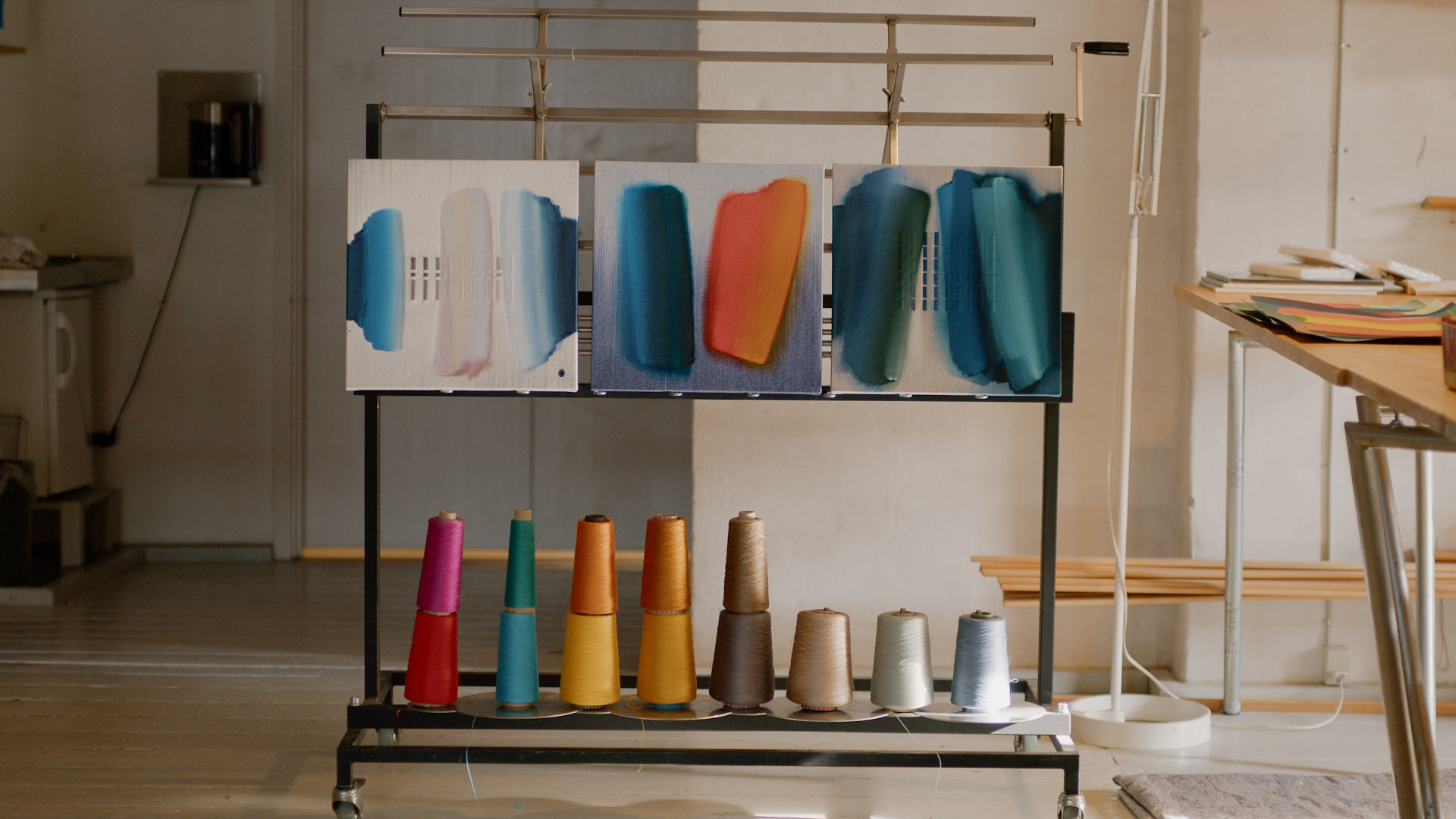 For this collaboration, Mann’s Threshold painting has been transferred onto the surface of the case through digital printing. Photography: RIMOWA
For this collaboration, Mann’s Threshold painting has been transferred onto the surface of the case through digital printing. Photography: RIMOWA
Working closely with the team at RIMOWA, the project came to life through a series of prototypes to ensure the brushstroke could be translated onto the surface of the case. ‘It really feels like I’ve painted it there and then on the spot,’ she comments. ‘I love the immediacy of the gesture.’ Also experimenting with gloss and matte surfaces to find the right texture and finish that best complemented the artwork, the artist reveals how it is challenging to achieve that through print technology. ‘I feel so happy with the result,’ she says, ‘and I love the idea of a portable artwork you carry with you through life.’
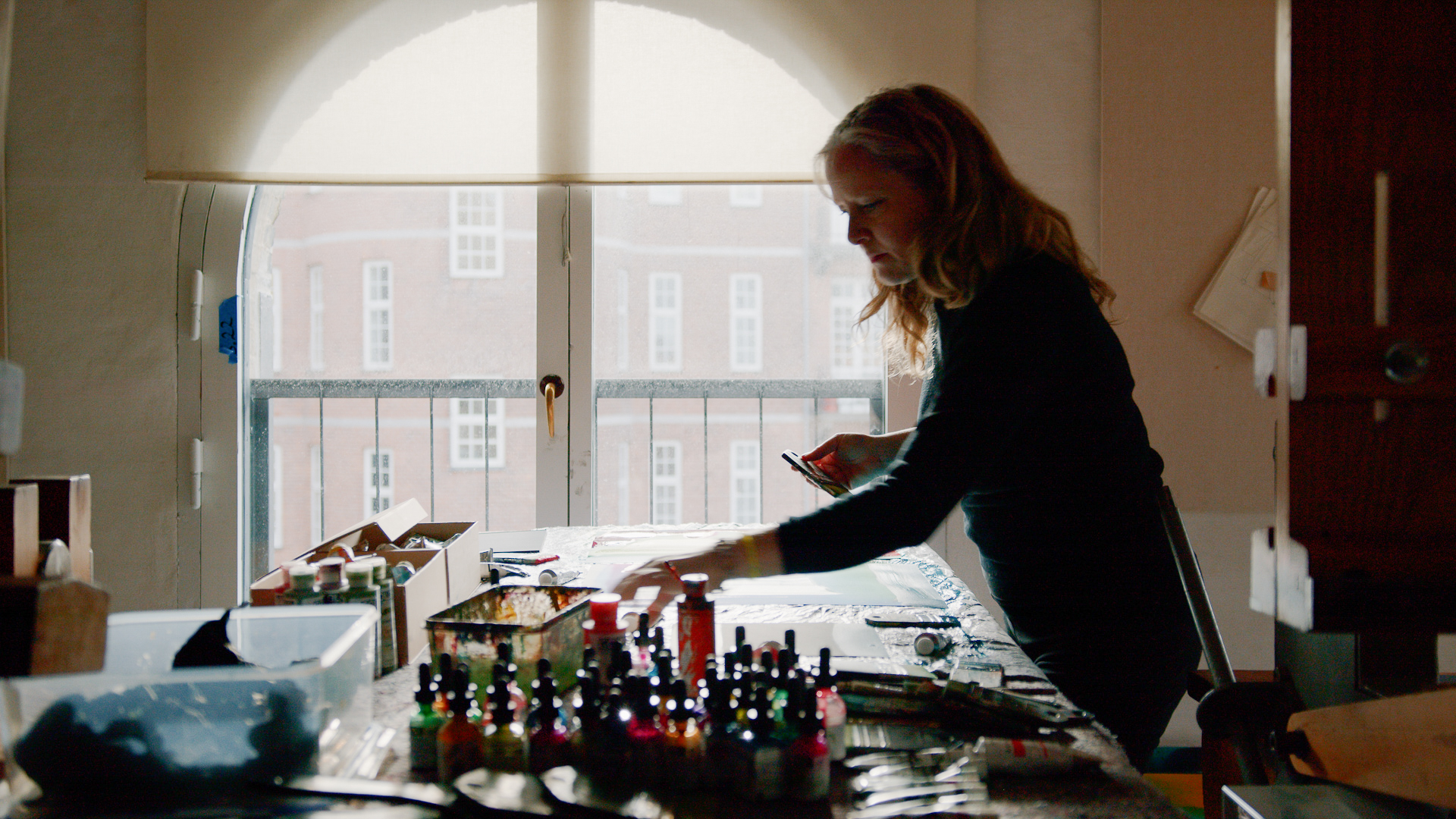 Ptolemy Mann explains how this collaboration is different to any project she has previously worked on. Photography: RIMOWA
Ptolemy Mann explains how this collaboration is different to any project she has previously worked on. Photography: RIMOWA
With RIMOWA’s philosophy centred on longevity, this collaboration pays homage to that in bridging the gap between art and functional design and creating a design that can be passed down through generations. By elevating conventional forms of luggage through art, it allows users to find a personal connection with the item while also giving more accessibility to art lovers wanting to invest into new works. Speaking of such collaborations, Mann states how it can be a challenge to find the right collaborators. ‘Not all ideas work or translate well,’ she says. ‘We also live in a time where museum shops provide us with all kinds of irrelevant objects covered in a whole spectrum of artworks and I think it’s actually a real challenge to collaborate meaningfully. In theory, it’s good to cross categories and explore new platforms as an artist – but for me, the key was to have an intelligent message behind the physical object.’
Titled ‘Threshold’, the work alludes to the idea of not only passing through something physically but also emotionally, the artist reveals. ‘Indeed, travelling is quite literally, a series of thresholds we pass through to get where we are going,’ she explains. ‘The whole act of passing through an airport and onto an aeroplane is quite extraordinary when you look at it from an outside perspective. Its surreal and kind of crazy – we put a huge amount of trust in that process getting us where we want to go safely.’ Working on her Threshold paintings over the last five years, this ongoing series of work is a way of capturing where the artist is and how she is feeling at any moment. ‘I could be in a field in Wiltshire on a hot July day or in a shed by the beach on the northern coast of Denmark and the aim with these works is to capture that specific energy in that moment, how I’m feeling in response to the place I’m in,’ she states. ‘After decades of making art on a loom which is, in my case, a huge, static, non-moving object – these paintings symbolise a sense of freedom and spontaneity. I can make them anywhere, at any time. So, this idea of creating a new threshold painting that captures immediacy, that we can carry with us was intriguing. I love the idea that it looks like I just made it a moment earlier… in fact the paint almost still looks wet.’
 The artwork continues onto the divider inside the case, bringing a unique touch to a functional item. Photography: RIMOWA
The artwork continues onto the divider inside the case, bringing a unique touch to a functional item. Photography: RIMOWA
Thinking about the art world from a wider perspective, Mann reminds us of its complexities. ‘The older I’ve become the less concerned I am by the rules. Rule breaking makes interesting art, in my view,’ she says. ‘As Rick Rubin has been saying in his book, The Creative Act, it works so much better when you make what you love. The moment you start trying to make art or music to please others’ expectations it tends to become instantly less powerful.’ While speaking of the renaissance that textile art is having, she also comments on the recognition that women artists are finally starting to see. ‘I hope things keep moving forward in both these arenas,’ she says. ‘In some ways things feel a bit more open and collaborative than they used to be. The idea of one gallery representing an artist worldwide seems to be waning.’
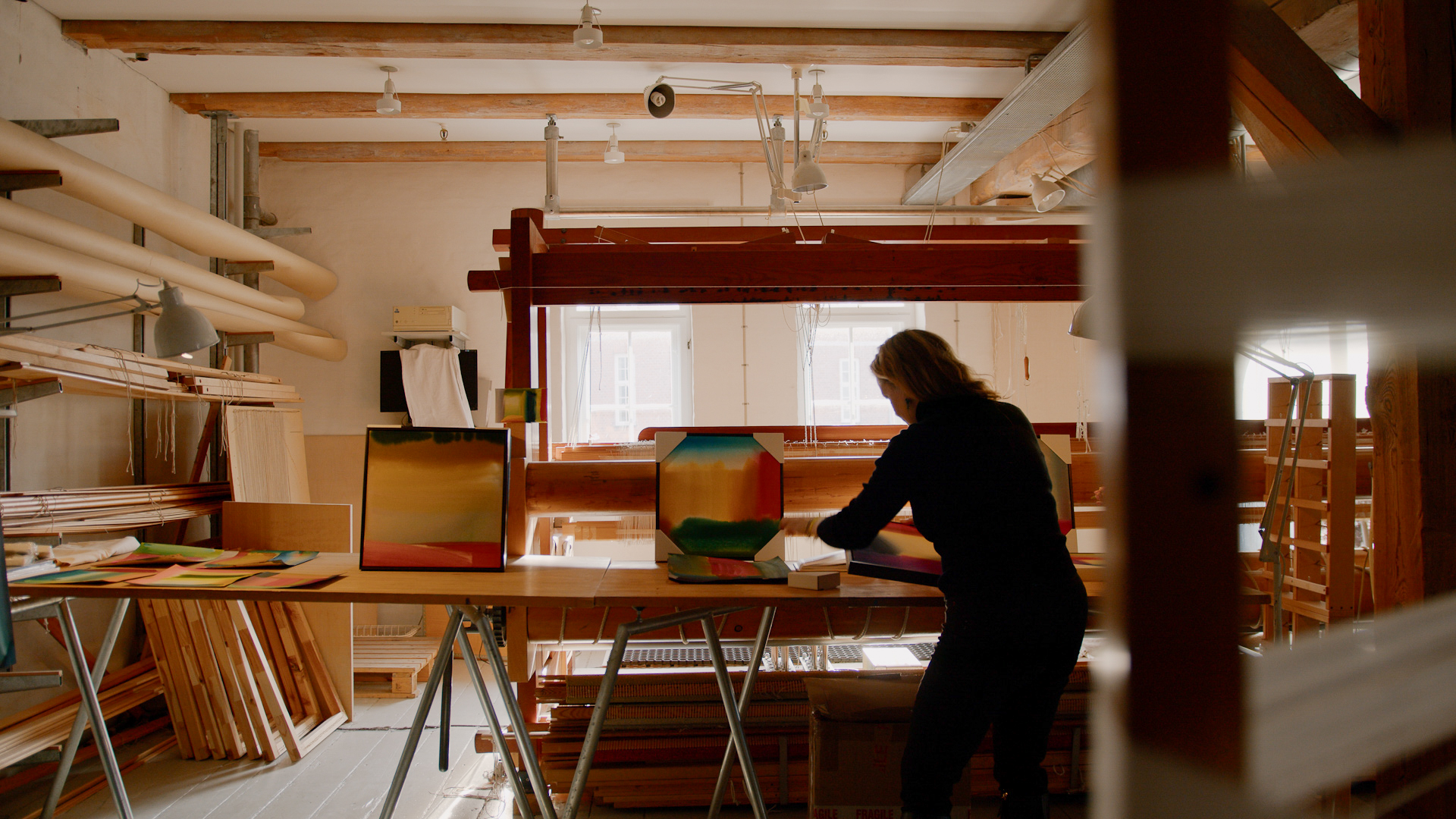 In applying her artwork to a RIMOWA case, Mann hopes it will reflect the brand’s ethos of longevity in creating something that can be treasured for generations to come with the quality and durability to match up to it. Photography: RIMOWA
In applying her artwork to a RIMOWA case, Mann hopes it will reflect the brand’s ethos of longevity in creating something that can be treasured for generations to come with the quality and durability to match up to it. Photography: RIMOWA
‘However, the one thing I absolutely hate, and wish would change, is this idea that as an artist you shouldn’t introduce yourself or your work directly to a gallery… you are meant to somehow get discovered’, she continues. ‘In any other industry there is a process by which you can approach a publisher (let’s say) with your book, through an agent and get it seen. Of course, the work must be good, but I always find it strange that in the artworld there is no formal route of introduction between artists and galleries. I can’t see this ever changing but I feel a lot of good gallery / artist relationships get completely bypassed. There’s just too much ‘luck’ involved but perhaps that’s one of idiosyncrasies of the artworld that makes it tick.’
Get a curated collection of design and architecture news in your inbox by signing up to our ICON Weekly newsletter

